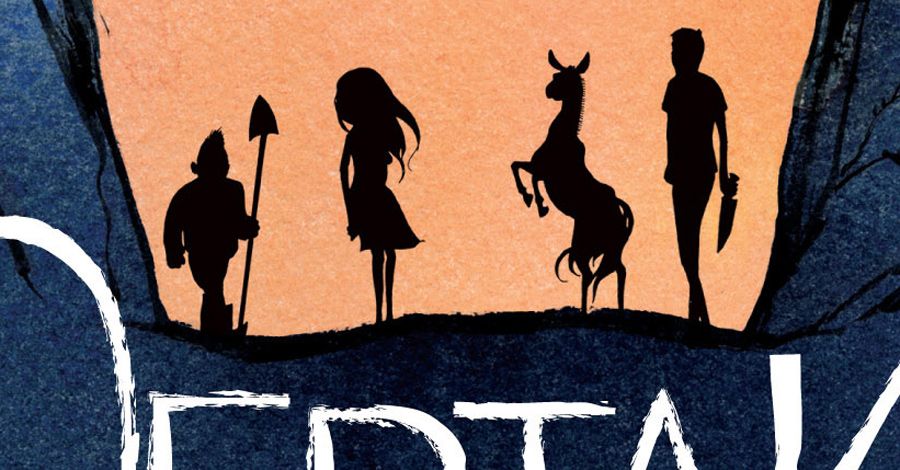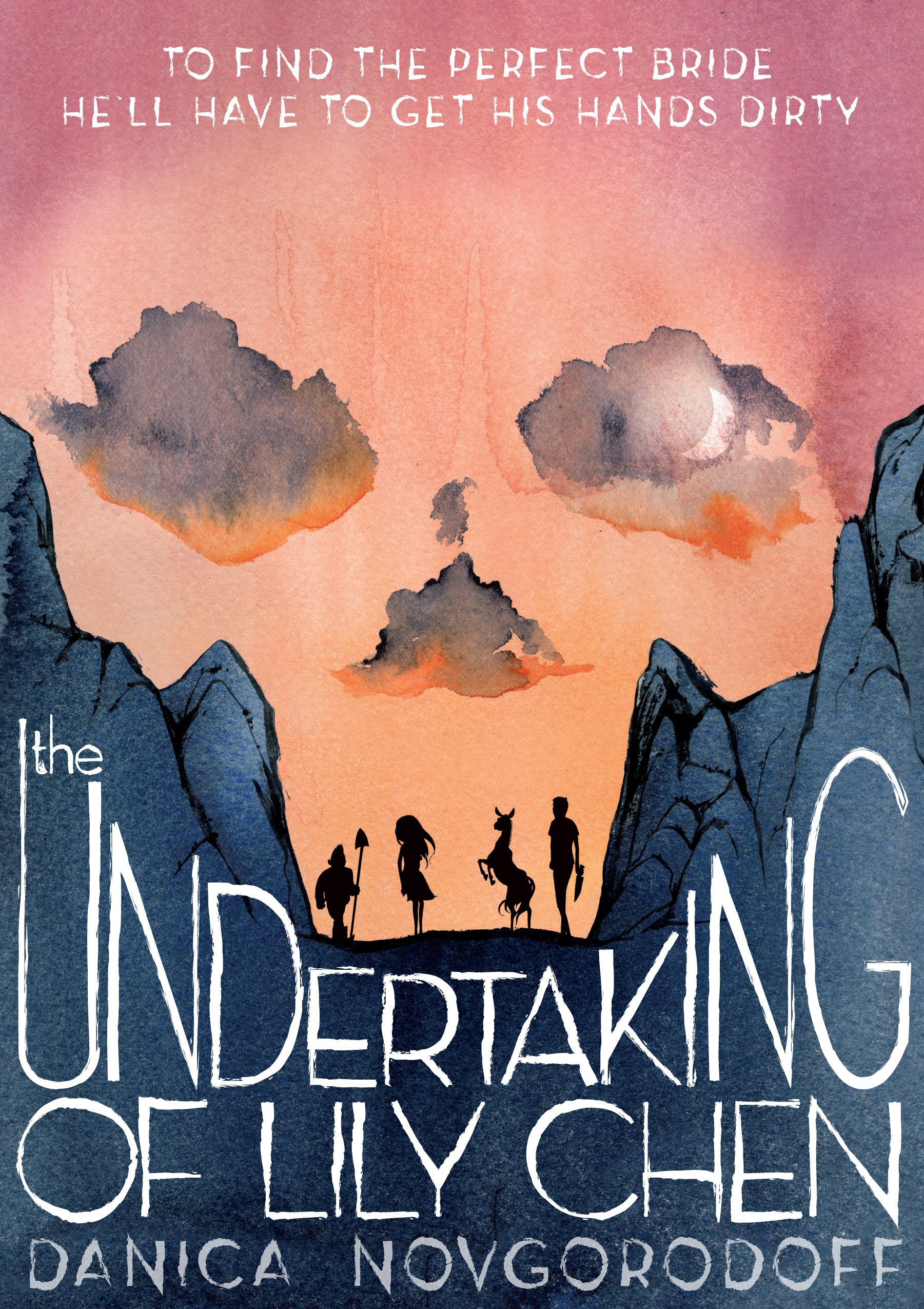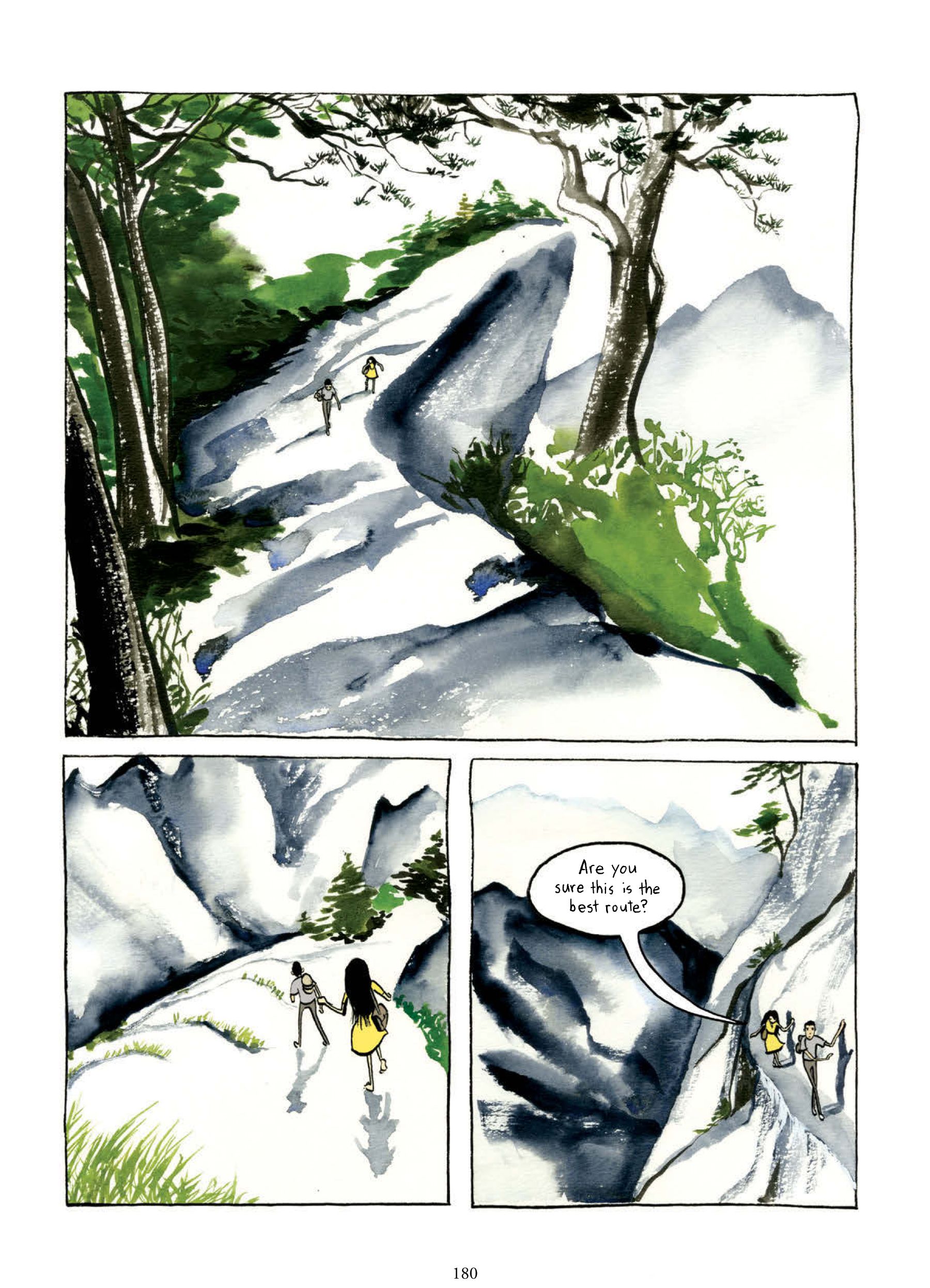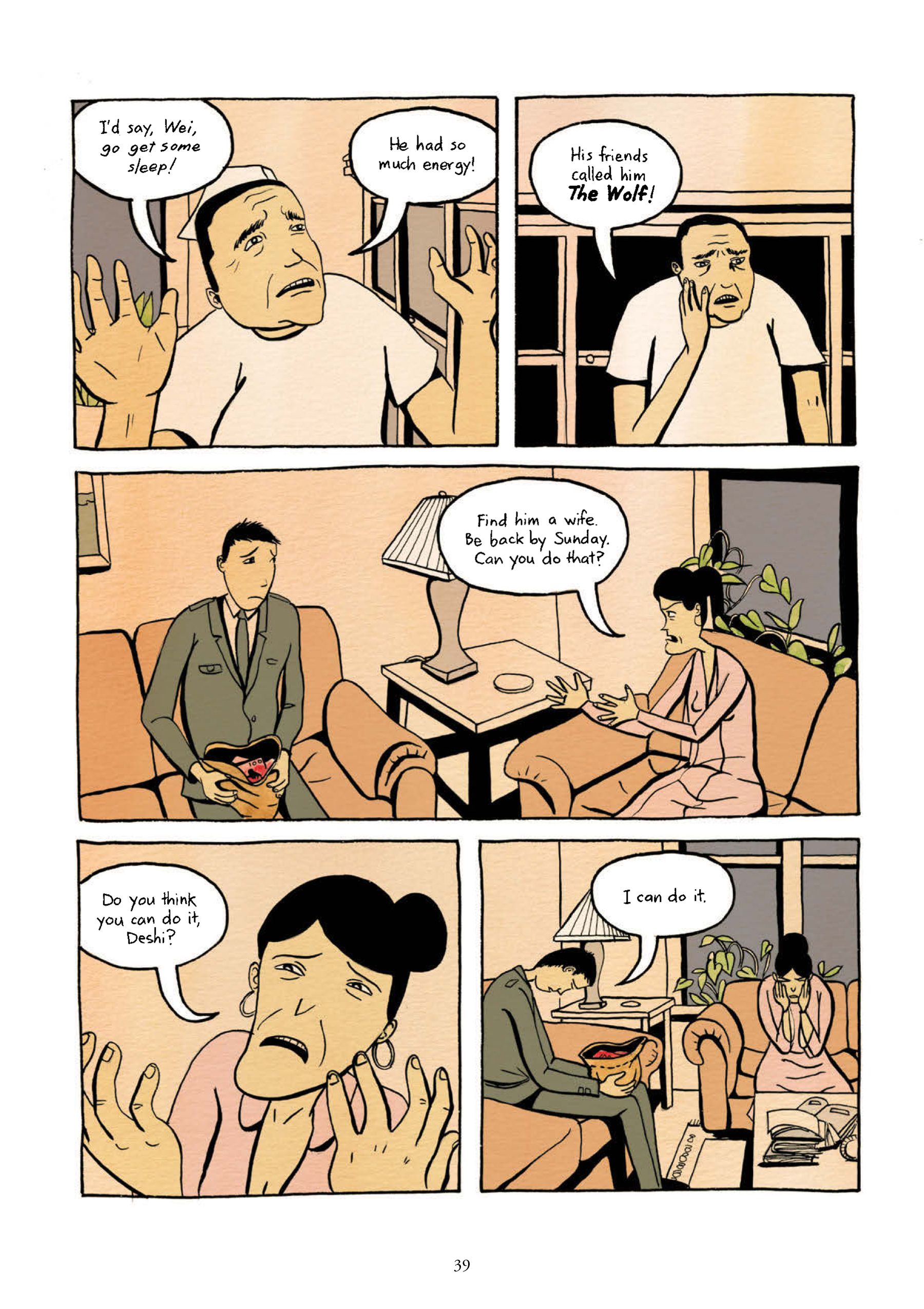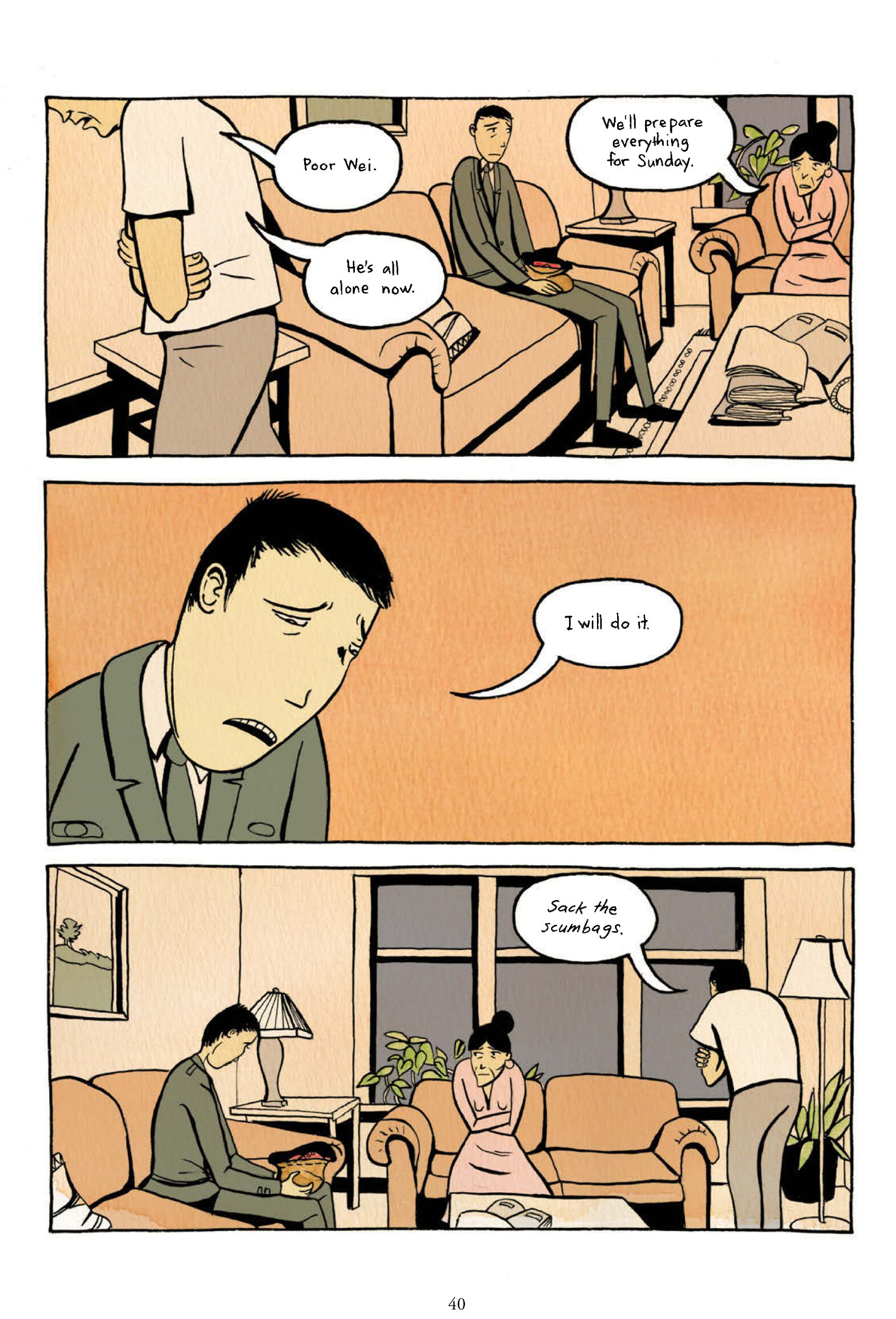With her award-winning minicomic "A Late Freeze" or her two First Second graphic novels "Slow Storm" and "Refresh, Refresh," Danica Novgorodoff has taken on quite a diverse array of subjects. Whether it's an unlikely meeting between a Kentucky firefighter and a Mexican immigrant during a tornado ("Slow Storm") or the coming-of-age for sons of Marine Reservists shipped off to the Iraq war, Novgorodoff has established herself as a talented cartoonist and gifted painter.
RELATED: Danica Novgorodoff Talks "Slow Storm"
On March 25, Novgorodoff returns with her third graphic novel from First Second, "The Undertaking of Lily Chen," an intimate look at two characters and an epic tale of contemporary China that centers on Deshi, a young man held responsible for his brother's accidental death. As punishment, Deshi's parents send him on a quest to acquire a ghost bride to accompany his brother into the afterlife. Through this mission, he meets Lily -- a very much alive young woman who has the potential to end his quest.
CBR News: Danica, how did you become aware of ghost marriages? Was it in the Economist article you excerpt at the opening of the book?
Danica Novgorodoff: Yes, I first read about the tradition of postmortem marriage in the Economist article, which reported that a black market for female corpses has sprung up in certain parts of rural northern China. Of course, the Economist described it in economic terms, the result of an imbalance of supply and demand -- there are too many bachelors in China and not enough eligible ladies, dead or alive. The article mentioned one grave robber who eventually turned to murder, which he said was easier than digging up bodies. He was caught by police when he accidentally dropped his cell phone at a gravesite he was excavating. The idea for the book started with that image in my mind: a dark night, a grave robber and a windy mountain cemetery where one fresh grave is marked by a stalk tied with a ribbon.
What was your process for developing the plot of the story? How did the idea progress and evolve?
Very slowly! I knew who the main characters were -- Deshi, a young man whose brother has died, and Lily, the young woman who complicates Deshi's already complicated mission to find his brother a ghost bride. It began as a kidnapping story, in which Deshi took Lily hostage, but as I worked on the story I realized that there were too many problems with kidnapping. First of all, it didn't fit Deshi's character to be so commanding -- he's hapless, he's fearful, he's the second son of parents who consider him a bit of a loser. Secondly, a hostage is a character without much agency, and I had no interest in writing a submissive female character. The plot changed greatly when I gave Lily her own reasons to want to join Deshi on a macabre and often absurd journey. And as I wrote, other characters kept appearing along the way, and getting in Deshi's way, and the story became rather episodic and epic.
Why did you choose a contemporary setting for the book as opposed to looking in on the past? What's the importance of the modern setting and its contrast with ancient traditions?
China is one place in particular where rapid changes (in technology, in the economy, in politics, in everything) makes for a very interesting and dramatic contrast between ancient and contemporary culture. It's not as obvious in the U.S. because there's less continuity between ancient civilizations and our current society, due especially to the brutal near-extinction of Native American tribes and people. Visiting China, I was so struck by the visual contrast of a massive bridge or highway being built through the kind of mountain landscape you see on two thousand-year-old scroll paintings; or a bevy of cranes crisscrossing the entrance to a 1,500-year-old monastery hanging from a cliff. I was really interested in exploring the ways in which ancient customs influence contemporary life, and the ways in which new technologies and laws and values are making their mark on (or gauging holes in) an ancient landscape and culture. I think that people from all cultures struggle with reconciling traditional mores and responsibilities to family with forging their own way in the world and breaking free from antiquated, restrictive modes of living. How do we let go of our ghosts? How do we live in two worlds at once? Those are some of the questions in this book.
"The Undertaking of Lily Chen" has a much larger page count than your other projects. Did you know from the beginning that this was going to be a bigger project?
I knew it would be bigger, but I didn't know it would be this big. I was willfully not counting pages as I drew it, so as to allow the story to unfold organically and (as much as possible, since I'd already written the script) in an unpremeditated way. I was a bit shocked to finally count over four hundred pages by the time I was nearing the end.
How do you approach the writing process? What's your method for working out plot, design and pacing?
I tend to write in a format that's closer to a short story (or long story in this case) than it is to a script. I don't think about page and panel breakdowns until the thumbnails (storyboard) stage. The way I worked on this book was to thumbnail each chapter as I came to it, and then to draw and ink those pages before thumbnailing the next chapter.
RELATED: Danica Novgorodoff Talks "Refresh, Refresh"
You mentioned a trip to China -- how much other research did you take on for the book?
I went to China twice to do research. The first time I went, I had not yet heard of ghost marriages, and had not yet thought to create a book set in China. Nonetheless, a lot of what I experienced during that first trip seeped into the book. That's the extraordinary thing about traveling and having wild adventures for their own sake -- you never know what ideas and new projects will transpire.
Of course, I also read lots of fiction and non-fiction about my subject, watched movies, studied art, and tried to learn Chinese brush painting.
I remember asking you about this book a number of years ago when it was under the title "The House of Discount Torture." How did you end up deciding on the final title?
I came up with the first title very early on, before I knew how the plot would unfold. I liked the title for its air of mystery, but in the end it just didn't make any sense. There wasn't really a house in the book -- or rather there were several houses of varying importance -- and there wasn't really any torture, thank goodness. I loved the title "The Undertaking," but found that there was already a book and a TV show by that title, plus, again, it was a little too mysterious and obscure. I'm glad Lily made her way into the title; she's assertive like that.
What was your experience in drawing the distinctively styled backgrounds? What kind of tools did you use to get the desired effect?
Like I mentioned, I took a couple classes on Chinese brush painting because I wanted the background landscapes to really evoke that ancient art of brush and ink on rice paper. But I found rice paper impossibly difficult to work with, and realized it could take decades to become proficient in the art of brush painting. I ended up working on watercolor paper with a combination of watercolor paint and ink, using the long flexible animal-hair brushes I failed to learn to master in the painting class, as well as tiny brushes for detail work.
I ask specifically about the backgrounds because you've always been interested in nature, in using watercolor, in depicting the setting. What was your thought process in providing landscapes for this book and how did you approach it differently?
Yes, landscape is my favorite thing to paint, and just as important to me as the characters in a story. In "The Undertaking of Lily Chen," I wanted to create a sense of the vast scale of the landscape and the great distance covered by the travelers on their journey. The landscape is beautiful but also a serious adversary to their goals. I also wanted the backgrounds to convey the idea that Deshi is traveling away from his modern life and into this wild, unknown region that's barely changed for thousands of years. Deshi must navigate carefully in order to return to the contemporary world in tact.
"Temple," the 18th Chapter of the book, felt very different than the rest of the book. It does bear similarities to other work you've done -- the dream sequence of Iraq in "Refresh, Refresh" for example. What was your thought process in crafting that particular chapter?
"Temple" was a chapter inspired by something that happened on my first trip to China. My friend and I were walking outside the temple walls in a rural town in Yunan when an old woman spotted us. Thinking we were ghosts, she sought us out and interviewed us and tied pieces of string around our wrists to make sure we were living humans. In "Temple," a group of puckish young monks are able to see the ghost of Deshi's brother following him and, uninvited, try to help him get rid of it. I wanted Deshi to enter the chaotic spiritual space of the temple, to have a frightening but ecstatic experience there, so I treated the chapter more as poetry than as prose. I drew on my memories (and photographs) of dark, mysterious Buddhist temples, hazy with incense and full of gorgeous, garish statues. Deshi goes through an unnamable transformation and finds some untapped moral and spiritual strength in himself. He doesn't get to use it till later.
How did you decide on the cover image?
It's based on a movie poster for a western film. I've always thought of this story as a sort of western, complete with a journey on horseback, a bad guy with a pencil mustache, a knife fight, and a fistful of dollars (well, yuan).
What else do you have on the burner? Any other projects readers should be looking forward to?
I have a number of things cooking. Some children's picture books, a book about volcanoes, an historical/fantastical narrative installation piece for Prospect Park in Brooklyn, and even an idea or two for a new graphic novel.
"The Undertaking of Lily Chen" hits stores March 25.

